Hyundai Tucson vs Mazda 6 Estate – Which car suits you better?
Two cars, one duel: Hyundai Tucson meets Mazda 6 Estate.
Which one wins in performance, efficiency and value for money? Find out now!
Costs and Efficiency: When it comes to price and running costs, the biggest differences usually appear. This is often where you see which car fits your budget better in the long run.
Mazda 6 Estate has a slight advantage in terms of price – it starts at 30000 £, while the Hyundai Tucson costs 30600 £. That’s a price difference of around 634 £.
Fuel consumption also shows a difference: Hyundai Tucson manages with 1 L and is therefore significantly more efficient than the Mazda 6 Estate with 6.80 L. The difference is about 5.80 L per 100 km.
Engine and Performance: Power, torque and acceleration say a lot about how a car feels on the road. This is where you see which model delivers more driving dynamics.
When it comes to engine power, the Hyundai Tucson has a distinct edge – offering 252 HP compared to 194 HP. That’s roughly 58 HP more horsepower.
In acceleration from 0 to 100 km/h, the Hyundai Tucson is barely noticeable quicker – completing the sprint in 7.90 s, while the Mazda 6 Estate takes 8.10 s. That’s about 0.20 s faster.
In terms of top speed, the Mazda 6 Estate performs somewhat better – reaching 223 km/h, while the Hyundai Tucson tops out at 194 km/h. The difference is around 29 km/h.
There’s also a difference in torque: Hyundai Tucson pulls evident stronger with 367 Nm compared to 258 Nm. That’s about 109 Nm difference.
Space and Everyday Use: Beyond pure performance, interior space and usability matter most in daily life. This is where you see which car is more practical and versatile.
Both vehicles offer seating for 5 people.
In curb weight, Mazda 6 Estate is barely noticeable lighter – 1475 kg compared to 1520 kg. The difference is around 45 kg.
In terms of boot space, the Hyundai Tucson offers a bit more room – 620 L compared to 522 L. That’s a difference of about 98 L.
In maximum load capacity, the Hyundai Tucson performs minimal better – up to 1799 L, which is about 135 L more than the Mazda 6 Estate.
When it comes to payload, Mazda 6 Estate barely noticeable takes the win – 571 kg compared to 545 kg. That’s a difference of about 26 kg.
Who comes out on top?
Overall, the Hyundai Tucson shows itself to be wins the duel decisively and secures the title of DriveDuel Champion.
It convinces with the more balanced overall package and proves to be the more versatile choice for everyday use.
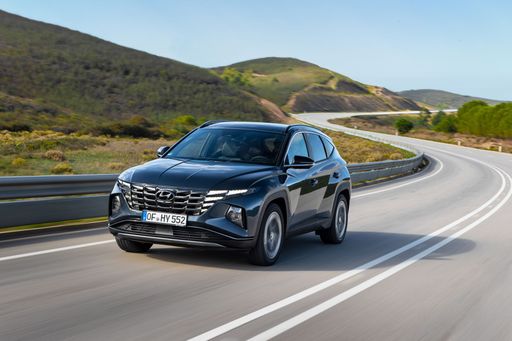
Hyundai Tucson
Hyundai Tucson
The Hyundai Tucson is a standout choice in the compact SUV segment, offering a perfect blend of style, comfort, and practicality. Its modern design is complemented by a spacious interior that provides ample room for passengers and luggage alike. With advanced technology and safety features, the Tucson ensures a smooth and enjoyable driving experience.
details @ hyundai.news
@ hyundai.news
 @ hyundai.news
@ hyundai.news
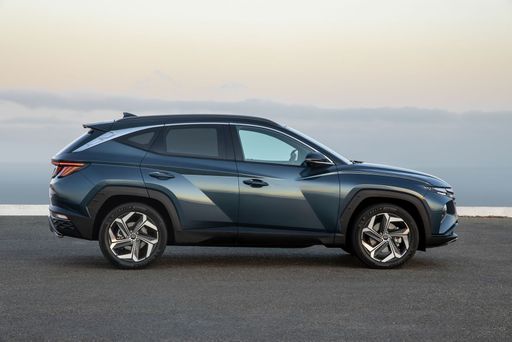 @ hyundai.news
@ hyundai.news
 @ hyundai.news
@ hyundai.news
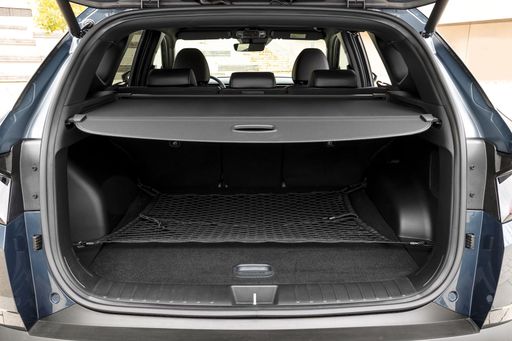 @ hyundai.news
@ hyundai.news
Mazda 6 Estate
The Mazda 6 Estate combines sleek design with a spacious interior, making it an ideal choice for families and those needing extra cargo space. Its refined driving dynamics and efficient performance provide an enjoyable experience on both city streets and long motorway journeys. With a focus on comfort and advanced technology, the Mazda 6 Estate offers a premium feel and modern connectivity features to enhance every drive.
details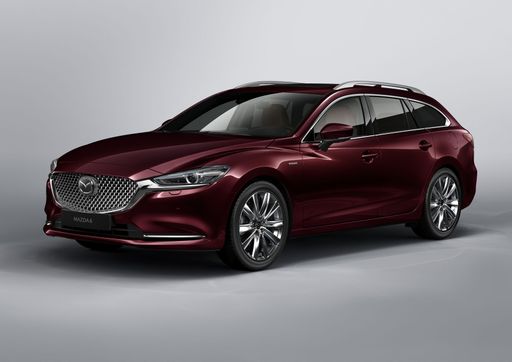 @ de.mazda-press.com
@ de.mazda-press.com
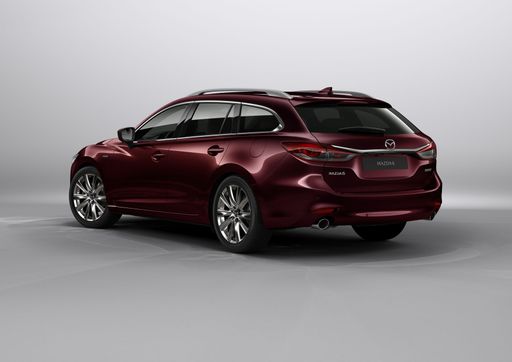 @ de.mazda-press.com
@ de.mazda-press.com
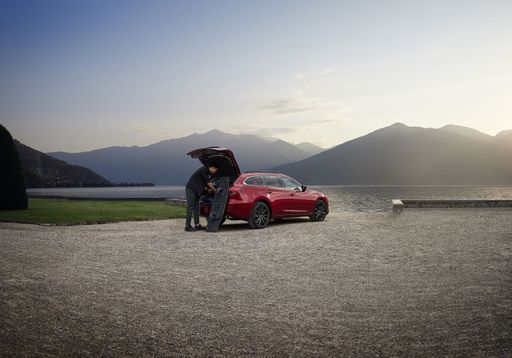 @ de.mazda-press.com
@ de.mazda-press.com
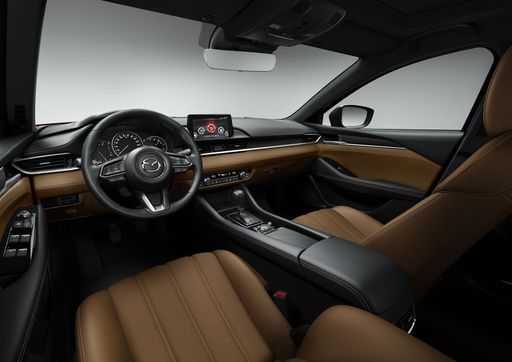 @ de.mazda-press.com
@ de.mazda-press.com

|

|
|
|
|
Costs and Consumption |
|
|---|---|
|
Price
30600 - 46300 £
|
Price
30000 - 43500 £
|
|
Consumption L/100km
1 - 6.9 L
|
Consumption L/100km
6.8 - 7.6 L
|
|
Consumption kWh/100km
-
|
Consumption kWh/100km
-
|
|
Electric Range
64 - 70 km
|
Electric Range
-
|
|
Battery Capacity
-
|
Battery Capacity
-
|
|
co2
22 - 156 g/km
|
co2
155 - 172 g/km
|
|
Fuel tank capacity
42 - 54 L
|
Fuel tank capacity
62 L
|
Dimensions and Body |
|
|---|---|
|
Body Type
SUV
|
Body Type
Estate
|
|
Seats
5
|
Seats
5
|
|
Doors
5
|
Doors
5
|
|
Curb weight
1520 - 1889 kg
|
Curb weight
1475 - 1598 kg
|
|
Trunk capacity
546 - 620 L
|
Trunk capacity
522 L
|
|
Length
4510 - 4520 mm
|
Length
4805 mm
|
|
Width
1865 mm
|
Width
1840 mm
|
|
Height
1650 mm
|
Height
1480 mm
|
|
Max trunk capacity
1721 - 1799 L
|
Max trunk capacity
1664 L
|
|
Payload
525 - 545 kg
|
Payload
483 - 571 kg
|
Engine and Performance |
|
|---|---|
|
Engine Type
Diesel MHEV, Petrol MHEV, Petrol, Full Hybrid, Plugin Hybrid
|
Engine Type
Petrol
|
|
Transmission
Automatic, Manuel
|
Transmission
Manuel, Automatic
|
|
Transmission Detail
Dual-Clutch Automatic, Manual Gearbox, Automatic Gearbox
|
Transmission Detail
Manual Gearbox, Automatic Gearbox
|
|
Drive Type
Front-Wheel Drive, All-Wheel Drive
|
Drive Type
Front-Wheel Drive
|
|
Power HP
136 - 252 HP
|
Power HP
145 - 194 HP
|
|
Acceleration 0-100km/h
7.9 - 11.6 s
|
Acceleration 0-100km/h
8.1 - 10.7 s
|
|
Max Speed
180 - 194 km/h
|
Max Speed
205 - 223 km/h
|
|
Torque
265 - 367 Nm
|
Torque
213 - 258 Nm
|
|
Number of Cylinders
4
|
Number of Cylinders
4
|
|
Power kW
100 - 185 kW
|
Power kW
107 - 143 kW
|
|
Engine capacity
1598 cm3
|
Engine capacity
1998 - 2488 cm3
|
General |
|
|---|---|
|
Model Year
2024
|
Model Year
2021 - 2022
|
|
CO2 Efficiency Class
E, F, D, B
|
CO2 Efficiency Class
E, F
|
|
Brand
Hyundai
|
Brand
Mazda
|
What drive types are available for the Hyundai Tucson?
Available configurations include Front-Wheel Drive or All-Wheel Drive.
The prices and data displayed are estimates based on German list prices and may vary by country. This information is not legally binding.
